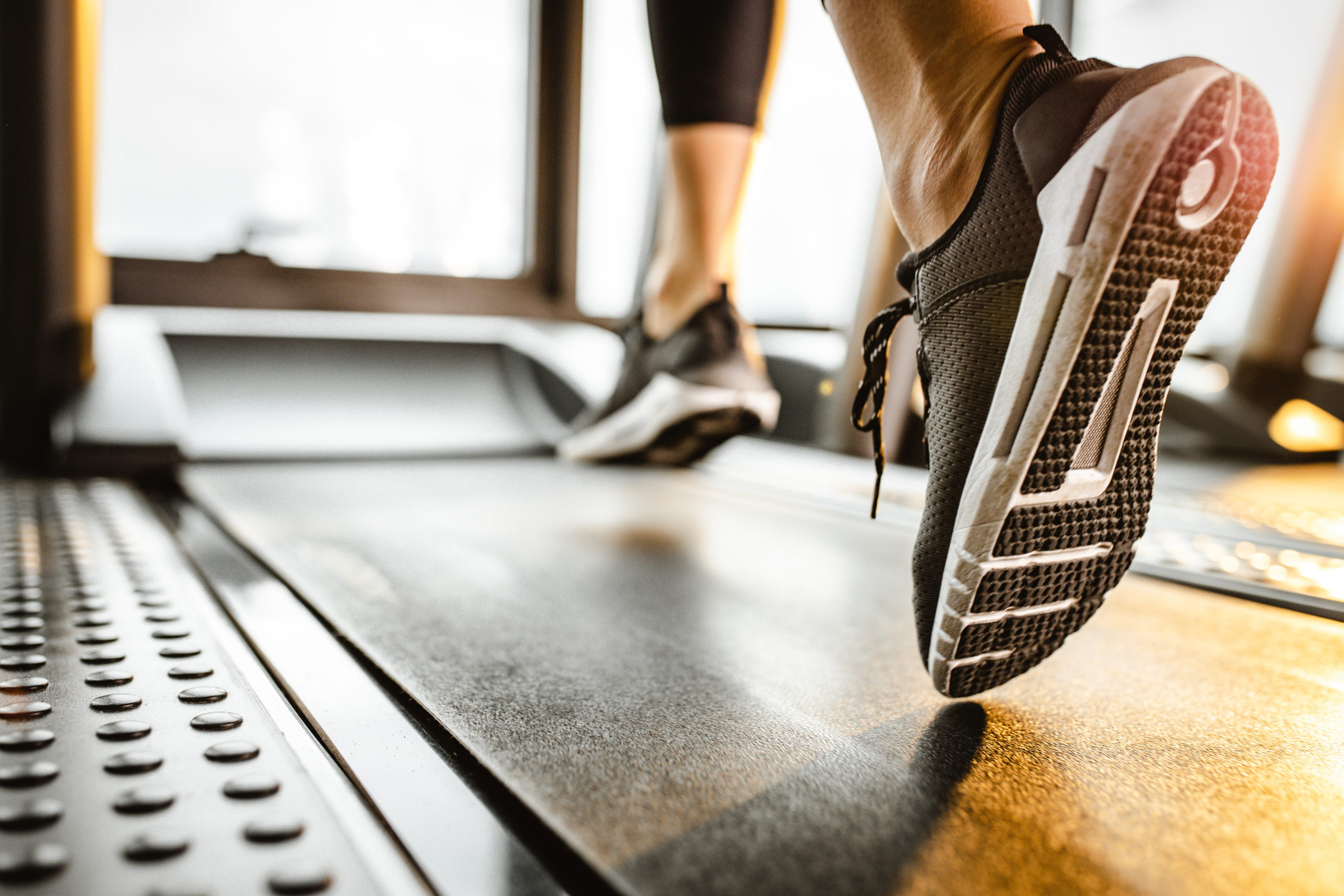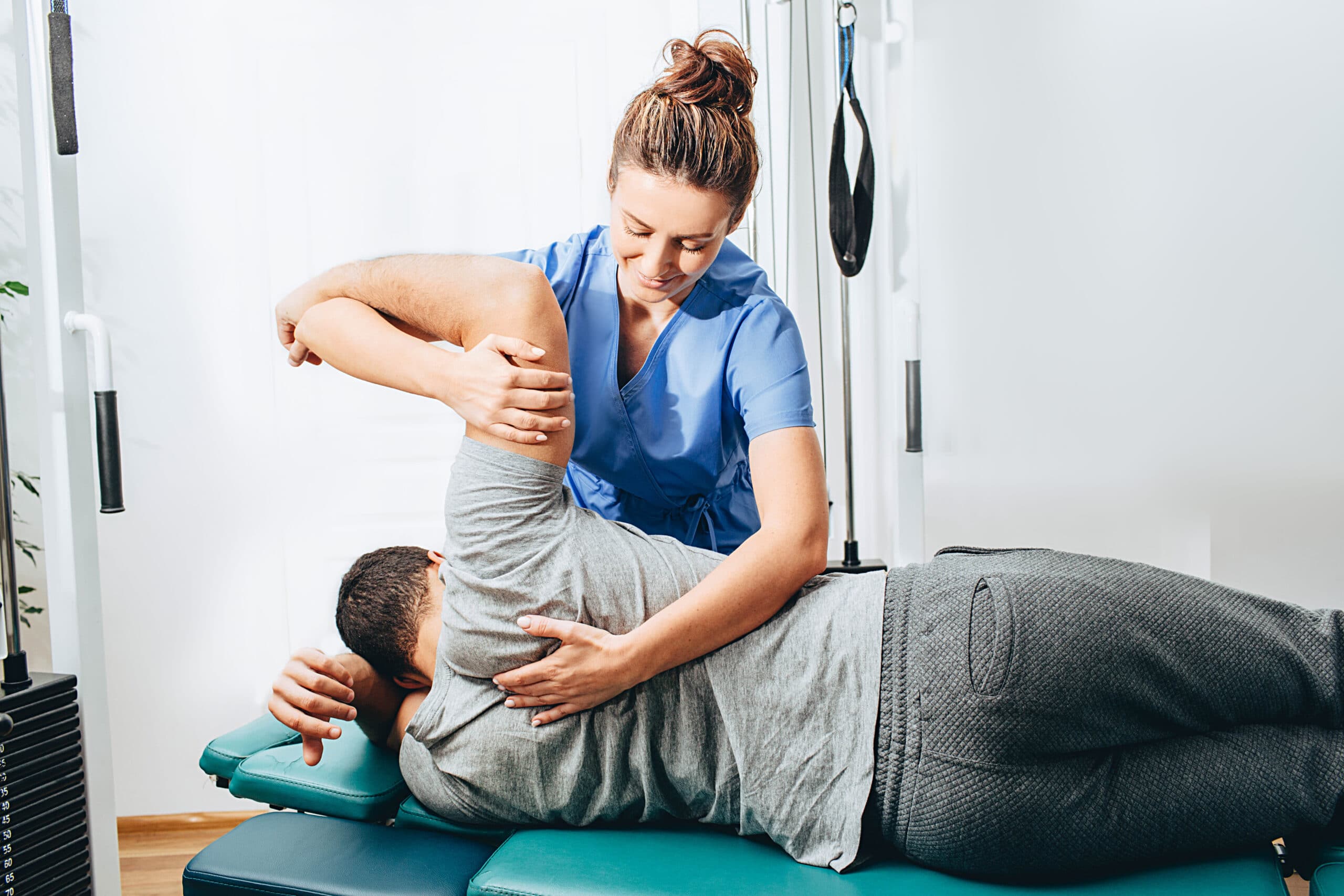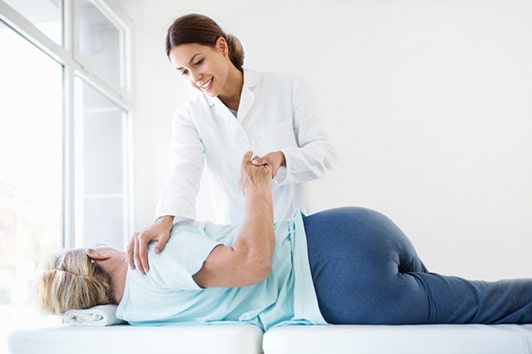Bursitis
UNDERSTANDING THE SYMPTOMS, CAUSES AND TREATMENTS
Understanding Bursitis
A bursa, similar to an intervertebral disc, acts as a cushion/shock absorber between bony projections (joints) and nearby tendons and muscles. Bursae reduce friction between gliding muscles and the bone. Bursitis is a painful condition that affects small fluid-filled pads called bursae. Inflammation of the bursa, or bursitis can be acute or chronic. Bursitis often occurs near joints that perform frequent repetitive motion, most commonly in the shoulders, hips, elbows and knees.
At VSI we treat all types of bursitis but the one most commonly seen and diagnosed is hip bursitis. The bony point of the hip is on the femur, and is called the greater trochanter. It is a large attachment site for muscles that move the hip joint. The greater trochanter has a large bursa overlying it that if irritated can cause hip bursitis.


Symptoms
Most patients diagnosed with bursitis will describe a sense of pain/tenderness over the specific joint, especially when pressure is applied. Stiffness, aching, swelling and reduced range of motion can also occur over the area with bursitis. Specific to the hip, bursitis presents as pain over the hip and it usually extends to the outside thigh. Pain may be felt as sharp and intense or achy and diffuse. Symptoms are often worse at night, especially when lying on the affected side. It is also worse with hip movement, such as getting up from a chair after being seated, prolonged walking, squatting or stair climbing.
When to Seek Treatment
If you’re noticing symptoms associated with Bursitis and suspect an issue, it’s crucial to consider consulting a board-certified specialist in order to obtain an accurate diagnosis and timely treatment. Early intervention can significantly improve your overall well-being and provide a broader range of treatment options, which may decrease as symptoms persist. The key to a successful and speedy recovery lies in addressing the root of the pain with your specialist as soon as symptoms arise.
While many people experience day-to-day pain, dismissing it as soreness, this may not be the case for everyone. If your pain persists for more than 10 days, it should be taken more seriously. Evaluate such prolonged pain with a specialist to identify the root issue and determine the appropriate treatment. Additionally, be attentive to other signs related to pain that should not be ignored, including pain accompanied by fever, pain associated with loss of bladder control, and weakness/tingling/numbness in your arms or legs.
It’s important to note that these are general guidelines based on our expertise over the past three decades, recognizing that each patient’s symptoms may be unique.


Common Causes
Chronic bursitis can be caused by overuse or trauma. Repetitive motion, such as throwing a baseball, repetitive kneeling, or running can lead to chronic bursitis. Chronic bursitis usually develops in patients with underlying conditions such as gout, osteoarthritis and rheumatoid arthritis. Oftentimes the cause cannot be determined.
Hip bursitis can affect anyone, but is more common in middle-aged or elderly women. It is less common in the younger population and men. However, acute or traumatic bursitis is more common in the younger population and typically is due to a sports-related injury. Repetitive motion of the hip, such as running, climbing stairs, bicycling or prolonged standing also may increase the rate of bursitis.
Bursitis is more easily developed after a fall or injury to the hip. Certain spinal disorders, such as scoliosis, arthritis, leg length discrepancy, also increase the rate of bursitis.
Risk Factors
Certain professions and medical conditions put patients at a higher risk for developing bursitis. Professions that require repetitive motions such as a baseball or basketball athlete, a painter, gardener or carpenter, etc all require repetitive motions such as throwing, overhead movements or prolonged kneeling. Medical conditions such as gout, diabetes or arthritis also increases your risk of developing bursitis.


Diagnosing Bursitis
A physical exam portion is usually the best way to diagnose bursitis. However, x-rays of the painful areas, ultrasounds, an MRI or CT may be ordered. Sometimes, if a joint or bursa is aspirated due to the inflammation, the fluid collected may be sent off to be tested in a lab to identify the cause of inflammation.
Treatment Options
Treatment options vary for bursitis. Many people with bursitis improve with simple lifestyle changes. Temporary rest of the affected joint and avoidance of activities that worsen symptoms aid in recovery. Ice applied over the affected area as well as non-steroidal anti-inflammatory medications (NSAIDs) such as naproxen or ibuprofen help to reduce pain and inflammation. High level physical therapy is also very important in the treatment of bursitis. If the pain and inflammation does not respond to these conservative options often a bursa injection is considered.
The bursa is injected with a combination of corticosteroid along with local anesthetic to relieve symptoms of bursitis. Corticosteroids are an anti-inflammatory medication that reduces inflammation in the area injected. This is a simple and effective treatment that can be done in the office. Injections often provide long-lasting relief but if symptoms return a repeat injection may be warranted.


